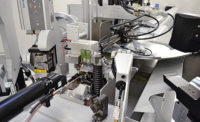
“Let GM go bankrupt.” “Put the Big Three out of their misery.” “To bail out these guys for running themselves into the ground is pure stupidity.” “The gutless bunch of crooks on Capitol Hill will be more than happy to steal our money and give it to worthless ‘charities’ like the Big Three.”
Such were among the comments posted on ASSEMBLY’s Web site three years ago in response to a series ofblogsabout the federal bailout of Generals Motors and Chrysler.
Back then, opponents decried the bailout as nothing less than communism. No one wanted to correct the mistakes of greedy, inept executives compounded by greedy, obstructionist unions. Congressmen from Southern states-where the Big Three’s Asian and European competitors have set up shop-wondered why their constituents should help companies in Northern states like Michigan and Ohio. Owners of nonautomotive businesses questioned why GM and Chrysler deserved special treatment when they did not.
Three years later, we’re happy to report that, like it or not, the bailout worked. Last November, GM raised more than $20 billion in the biggest initial public offering in U.S. history, and the government’s stake in the company dropped to 33 percent from 61 percent. At press time, GM stock closed at $28.85 a share. That’s more than Xerox ($9.40), Dell ($15.47), Motorola ($23.64) and even General Electric ($18.32).
Better still, GM is keeping that capital close to home. Earlier this year, GM announced plans to invest some $2 billion in its U.S. manufacturing capacity, creating or preserving more than 4,000 jobs at 17 facilities in eight states. That investment is on top of $3.4 billion and more than 9,000 jobs that GM has added or saved since mid-2009.
The news is equally good at Chrysler. In May, the automaker paid back $7.6 billion in bailout money-$5.9 billion to the United States and $1.7 billion to Canada. A month later, the U.S. Treasury sold its last 6 percent stake in the company to Fiat for $500 million.
Chrysler has restored the third shift at three of its North American assembly plants, and the company posted its first profit since 2006. Like GM, Chrysler is putting money into its North American facilities. For example, the company has invested some $1.1 billion into its transmission assembly plant in Kokomo, IN, this year.
Three years ago, lawmakers worried as much about jobs in the supply chain as they did over jobs at the OEMs. Thankfully, the revival of GM and Chrysler is also benefitting their suppliers. Last month, for example, International Automotive Components announced plans to open a new assembly plant in Belvidere, IL, to supply interiors for Chrysler, creating 200 jobs.
While neither GM nor Chrysler are out of the woods, we’re thrilled with their progress. We applaud Congress and the Obama Administration for doing whatever it took to save American jobs. We wish both companies continued success on the road to recovery.









